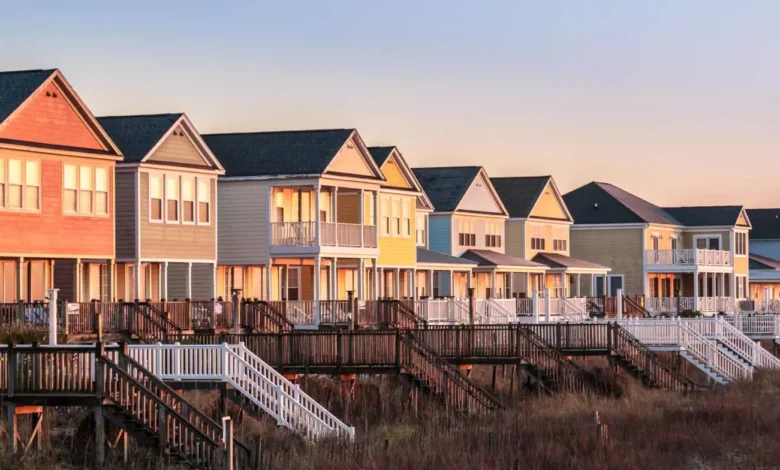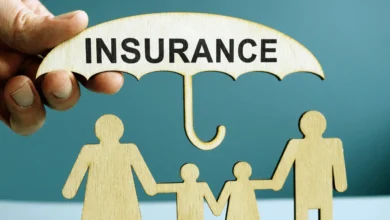Why Homeowners Insurance Is Becoming Unaffordable in High-Risk States in USA 2025

In 2025, homeowners across the United States—especially in disaster-prone regions—are experiencing a sharp rise in insurance costs. From California wildfires to Florida hurricanes and Midwestern tornadoes, natural catastrophes have made homeowners insurance increasingly expensive or unavailable in high-risk zones.
This article explores why homeowners insurance is becoming unaffordable in high-risk states, reveals what states have the highest homeowners insurance rates in 2025, and offers insight into state insurance plans for high-risk homes.
🔥 The Growing Crisis in High-Risk States
Over the past decade, the U.S. has seen an explosion in billion-dollar disasters. According to the National Oceanic and Atmospheric Administration (NOAA), 2023 and 2024 each had over 20 weather and climate disasters exceeding $1 billion in damages. Insurers have struggled to keep up with claims, pushing up rates and shrinking availability.
Why Are Insurance Companies Pulling Out?
Insurers are either:
- Exiting high-risk regions (like parts of California and Florida)
- Non-renewing existing customers
- Drastically increasing premiums
This has led to unaffordable homeowners insurance in high-risk states, where coverage has become a financial burden for many.
💸 What States Have the Highest Homeowners Insurance Rates in 2025?
A recent analysis by Insurance.com and Insurify shows alarming trends in high-risk state insurance rates. Here are the top five most expensive states for homeowners insurance in 2025:
| State | Average Annual Premium (2025) | Main Risk Factors |
|---|---|---|
| Nebraska | $5,640 | Tornadoes, hail, severe storms |
| Florida | $5,488 | Hurricanes, storm surge, litigation costs |
| Louisiana | $4,135 | Flooding, hurricanes |
| Oklahoma | $4,643 | Tornadoes, hail |
| Texas | $3,973 | Hurricanes, tornadoes, wildfires |
These rates far exceed the national average of around $2,250/year, making it difficult for homeowners in these states to maintain their coverage.
🌪️ The Role of Climate Change in Driving Up Rates
Climate change is making natural disasters more frequent and severe. Insurers rely on historical data to price risk, but recent years have brought unpredictability and escalating claims costs.
According to the Insurance Information Institute (III), the rising cost of reinsurance, inflation in construction materials, and regulatory challenges are all contributing to the problem.
❌ Insurer Departures: A 2025 Snapshot
Here’s how major insurers are reacting in 2025:
- State Farm: Ceased writing new policies in California due to wildfire risks
- Allstate: Paused new home insurance in multiple high-risk zip codes in Louisiana
- Farmers: Withdrew from hundreds of Florida counties, citing excessive litigation costs
- USAA and Nationwide: Raised premiums significantly in wildfire and hurricane zones
These shifts are leaving millions of homeowners scrambling to find alternative coverage—if they can afford it at all.
🏛️ State Insurance Plans for High-Risk Homes
When private insurers exit the market, many homeowners turn to state-run insurance programs, often called FAIR Plans (Fair Access to Insurance Requirements). These plans offer basic coverage, but come with high premiums, limited protection, and few optional add-ons.
Examples of FAIR Plans in 2025:
- California FAIR Plan
- Covers over 350,000 homes in wildfire zones.
- Premiums have risen 33% YoY due to record fire seasons.
- Source: California Department of Insurance
- Florida Citizens Property Insurance
- Florida’s state-backed insurer of last resort.
- Currently holds over 1.3 million policies.
- Struggles with claims payouts and rising litigation.
- Source: Citizens Property Insurance Corporation
- Louisiana Citizens
- Saw a 40% increase in enrollments in 2024–2025 due to hurricane damage.
- Funded partially by taxpayer subsidies.
- Source: Louisiana Department of Insurance
While FAIR Plans offer a temporary solution, they are not sustainable or ideal long-term. They are typically more expensive and don’t include vital protections like flood or earthquake coverage unless added separately.
🛠️ How Homeowners Can Respond
If you live in a high-risk area and want to maintain or reduce the cost of homeowners insurance, consider these actionable strategies:
1. Home Hardening
- Install fire-resistant roofing and siding
- Create defensible space in wildfire zones
- Reinforce windows and doors against wind damage
- May qualify for premium discounts
2. Flood & Earthquake Coverage
Most standard policies do not cover floods or earthquakes. Use:
- National Flood Insurance Program (NFIP): floodsmart.gov
- Private flood insurance options with more flexibility
3. Bundle Your Policies
Many insurers offer discounts if you bundle home and auto policies.
4. Review Your Policy Annually
Ensure your coverage reflects the value of your home and personal belongings. Remove unnecessary riders and update to avoid overpaying.
5. Use a Licensed Broker
Independent insurance agents can help you shop across multiple carriers to find the best rate—even in high-risk zones.
📉 Is Home Insurance Still Affordable in 2025?
In many states, the answer is no.
According to a Barron’s report, premiums are expected to increase another 8–10% in high-risk states by the end of 2025. In some ZIP codes, homeowners are choosing to self-insure—opting out of coverage altogether due to cost.
A 2025 Investopedia study showed that nearly 7% of homeowners in disaster-prone regions are uninsured, which could lead to devastating financial consequences in the event of a loss.
✅ Final Thoughts
Homeowners insurance is entering a crisis stage in the U.S., especially in high-risk areas impacted by wildfires, hurricanes, and flooding. The combination of climate volatility, rising repair costs, insurer withdrawals, and regulatory challenges has made coverage unaffordable for many Americans.
If you’re asking:
- “What states have the highest homeowners insurance rates in 2025?” — look to Florida, Nebraska, and Louisiana.
- Facing rising high-risk state insurance rates? Consider mitigation, shopping widely, and exploring state insurance plans for high-risk homes.
- Use every tool available to protect your most valuable asset—your home.
🔗 Useful Resources
- Insurance.com – Average Home Insurance Rates by State 2025
- FEMA Disaster Risk Map
- FloodSmart.gov – Flood Insurance Info
- California FAIR Plan
- Florida Citizens Property Insurance




